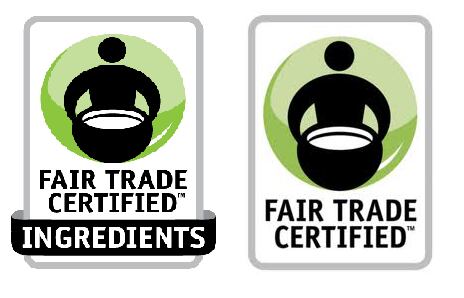Last month, not-for-profit organization Fair World Project called draft changes to Fair Trade USA's labeling policy a ‘hoax’ because brands would no longer be obligated to use all fair trade ingredients that are available from a certified source.
Jenna Larson, Fair Trade USA communications manager, told ConfectioneryNews.com: “Given that Fair Trade currently focuses on products imported from developing countries, many products can only reach approximately 20% in their Fair Trade content because most of their ingredients (like milk or flour) are produced domestically.
“For example, in a brownie, the cocoa and sugar can be Fair Trade Certified, but the flour cannot….Also, according to the USDA, sugar grown in the United States meets about 70-75% of domestic demand, so much of the sugar consumed here is not eligible for Fair Trade certification.”
Draft consultation and different labels
She said that Fair Trade USA periodically reviews its policies and in December 2012 it consulted 30 representatives including farmer groups, traders, brands, retailers, consumers, NGOs like the Fair World Project to propose a draft policy.
The draft changes mean that products containing over 20% of Fair Trade ingredients may carry a ‘Fair Trade Certified Ingredients’ label, but only those with 100% certified ingredients can use a label that says ‘Fair Trade Certified’.
“We are the only Fair Trade certifier that has a differentiated logo for 100% Fair Trade vs. composite products,” said Larson.

Fairtrade International
Fairtrade International, a separate organization from Fair Trade USA, also has a 20% threshold. However, if a certified ingredient is available it must be used even if supply usually comes domestically from non-certified sources.
“US companies do need to source Fairtrade sugar for all products labeled with the Fairtrade Mark, without exception,” said Reykia Fick, media relations manager for Fairtrade International.
Hershey link
When Fair World Project issued a press release criticizing proposed changes, it hit out at Hershey, which it alleged uses “less on cheap sugar produced under exploitative labor conditions”. Jenna Larso, Fair Trade USA communications manager, said: “It is unfortunate that the Fair World Project falsely coupled the Hershey’s announcement with our policy update. These are two separate initiatives, and there is much more to the story than the press release conveys." She said that Fair Trade USA welcomed Hershey’s move to source 100% certified cocoa by 2020 and said the firm should be commended for its efforts.
However, Fairtrade International does operate a “mass balance” policy for sugar, which means that a company must source the full volume of sugar from Fairtrade certified producers for the brand that will be certified.
This may mean the firm also uses non-Fairtrade sugar for uncertified brands which become mixed with certified sugar.
“Therefore we do not guarantee that all the sugar in a Fairtrade Mark-labeled product is physically sourced from a Fairtrade farm,” said Fick.
Fairtrade Intentional food composite products can use the Fairtrade Certification Mark on the front of packaging, but the percentage of Fairtrade certified ingredients must be displayed on the back of pack, unless these requirements contradict national law.
Fair Trade USA
Fair Trade USA strongly recommends that companies label the percentage of Fair Trade ingredients, but companies are not compelled.
It requires coffee, tea and cocoa to be always be Fair Trade, but not ingredients like sugar that are mainly sourced domestically.
The organization is currently considering feedback on its draft policy after a month-long public comment period that concludes this week.
